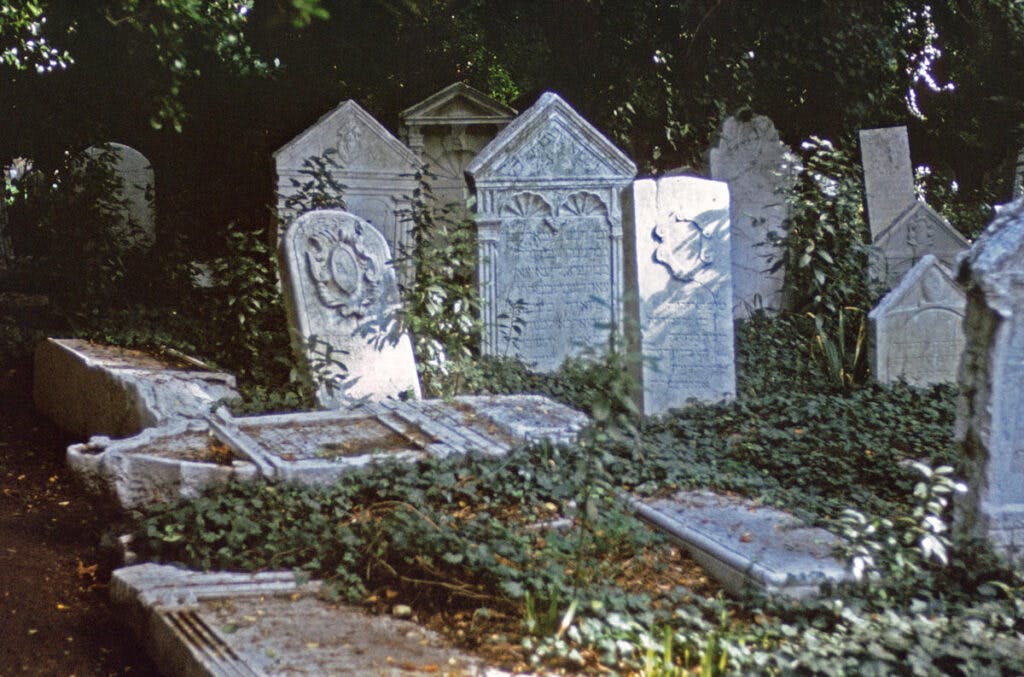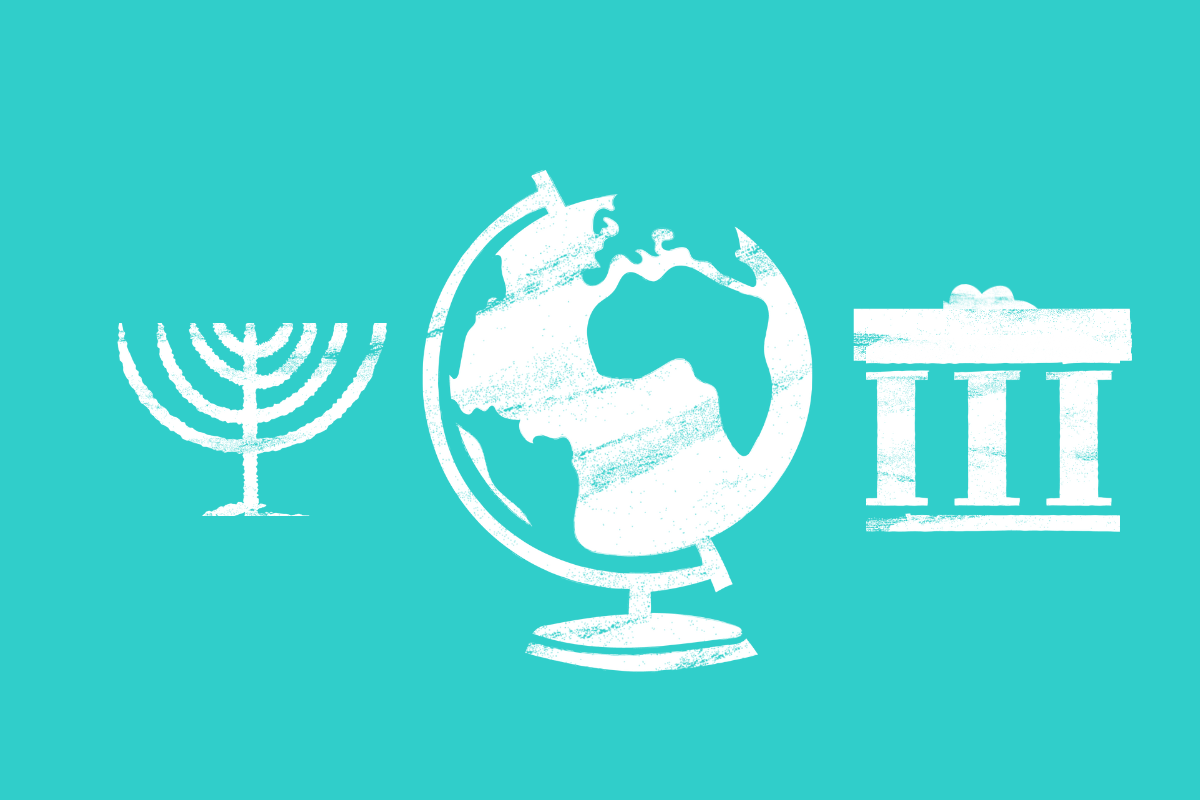Published: 22 July 2022
Last updated: 5 March 2024
Travelling in Europe SHARON BERGER observes an interesting balance between historical and contemporary Jewish vitality.
I recently returned from a trip to Italy and it was exciting to explore the world again. My primary purpose was to hike in the Dolomite Mountains, but I also spent time in the cities and towns of northern Italy.
The day before my hike began, I was in the small alpine village of Cortina d’Ampezzo, which was a base for the 1956 Winter Olympics. It is a picturesque place surrounded by magnificent slopes. After an enjoyable lunch I strolled around looking at very upmarket shops. In one shop window I spied, among the shining silverware, candelabras and yadim (pointers) to read from the Torah. The shop was closed so I don’t know how Judaica ended up in this non-Jewish town near the Italian-Austrian border.
It did bring home to me that in much of Europe, these fragments are all that is left of the rich history of European Jewry. In parts of Italy there have been Jews since 200 BC, the late Roman Republican period.
My travels through northern Italy reminded me that World War II was not the beginning of challenges for local Jewish communities. The first ghetto was established in Venice in 1516 and remained in effect till Napoleon arrived in 1797. Venice restricted the movement of its Jewish residents and ensured they were locked up at night – and gave the world the word “ghetto” as well as the practice. Over the years, many Italian, and European, Jewish communities faced cycles of acceptance and expulsion. When admitted they often faced restrictions on what they could do and were largely accepted only when communities needed money lenders. Many were made to wear yellow discs, hats or veils to distinguish them from the general population.

In only a few weeks I saw countless paintings of Madonna with child, endless depictions of Jesus on the cross and a plethora of majestic churches. The intended statement of the Church’s absolute wealth and power still resonates today. I can only imagine what a presence they had in the Middle Ages.
The longstanding Jewish presence, however, has little to remember it by, perhaps a restored synagogue or museum, a crumbling cemetery or humble stolpersteine (“stumbling stones). More than 75,000 of these are scattered around Europe to remember individual Holocaust victims.
I attended a heavily guarded synagogue in Verona for Friday night services. Only with the help of six Australian male travellers were they able to get a minyan in this beautiful space. The largely aging congregation numbers about 100 people, including from the town of Vicenza. The situation is different in the more vibrant communities of Rome and Milan, which comprise the vast majority of the country’s 27,000 Jews.
The trends seem to indicate that smaller European communities will disappear over time and. some difficult decisions will have to be made about pooling resources and addressing community needs, particularly the welfare needs of the elderly.
As an itinerant Jew who has lived on five continents, being back in Europe made me wonder why Jews still lived in Europe. I know most people remain in the country they were born in, but after centuries of discrimination and persecution, it seemed clear they would never fully be part of the establishment. At best, perhaps they would be tolerated for their differences. Why wouldn’t they emigrate to Israel or another, more multicultural community?
Conversely, in recent years there has been an influx of Israelis into Berlin. For many of them, their move was dedicated to the memory of their German grandparents. Also, the cost of living is lower than in Israel, and these largely Left-leaning Israelis are able to get away from the never-ending political conflict. Some see the decision to relocate to Berlin as the best revenge against the Holocaust, as if they were dancing on Hitler’s grave. Combined with Soviet-born Jews, these Israelis have made Berlin one of the world’s fastest growing Jewish communities.
The Joint, the Lauder Foundation, and organisations such as Paideia and Chabad have been at the forefront of reviving post-WWII Jewish communities in Europe. Some of their biggest successes include Hungary’s annual Szarvas International Jewish Summer Camp that attracts over 1600 campers from more than 25 countries. The camp has been running for more than 30 years and has over 25,000 alumni, many of whom are at the forefront of building a Jewish future in Europe.
Yesod Europe, a partnership project between The Joint and the Rothschild Foundation Hanadiv Europe, works with mostly locally born and bred professional leaders to offer professional development and leadership opportunities to help support community growth. They are working with local leaders to ensure that communities remain inclusive and welcoming, including offering progressive and non-synagogue options to those not recognised by the Orthodox community as halachically Jewish.
Under 40s professionals polled in The Joint’s European leader’s survey, held every 3-4 years, are more optimistic about the future of Europe (61%, compared to 51% of those over 41), and the future of European Jewry specifically (64%, compared to 43% of those over 41).
Alex Kats, a Melbourne-based alumni of the Nahum Goldman Fellowship, was recently in Strasbourg, France, for the young international Jewish leaders program. While not minimising the challenges that various European communities face, including antisemitism and the banning of kosher slaughter, Kats said many of his European counterparts are leading vibrant, up-and-coming communities, fueled by the interest of young people, often only recently discovering their Jewish roots in a post-communist world.
It is encouraging to know that at least among larger European cities, Jewish communities continue to flourish, despite increased aliyah, the threats to liberal democracy more broadly and the rise of antisemitism. I much prefer this vision than that of Jewish objects sitting as quaint relics in Italian towns.
Photo: Congregation Kulanuu in southern Italy (Kulanu)




